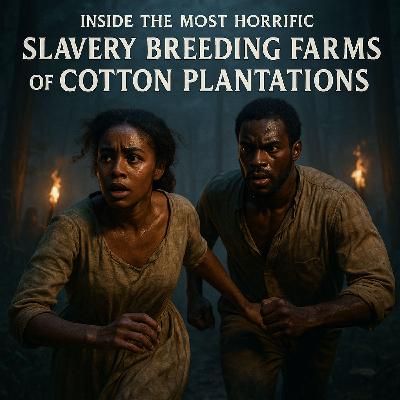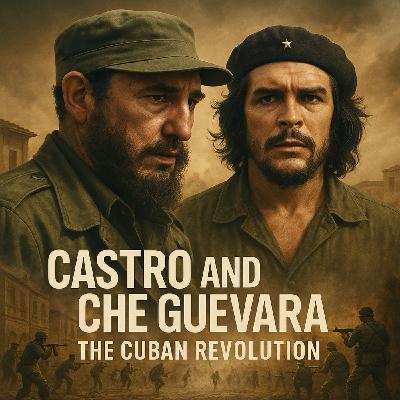Inside The Most Horrific Slavery Breeding Farms of Cotton Plantations
Update: 2025-11-18
Description
The narrative chronicles the emergence, evolution, and human impact of slavery in the early American colonies, focusing especially on the lived experiences of two fictionalized enslaved Africans—Amina and Kofi. Beginning in the early 17th century with the arrival of the first group of African captives in Virginia, the story situates their plight within the broader socioeconomic transformation of the colonies. As plantation economies expanded, enslaved Africans became the backbone of agricultural production, their labor exploited to generate unprecedented wealth for European settlers.
Within this historical framework, Amina and Kofi emerge as representative figures whose individual experiences illustrate the systemic brutality of slavery. The narrative follows their forced labor, the harsh conditions of plantation life, and the psychological toll of constant surveillance and violence. Despite these oppressions, the enslaved community forms a network of cultural and emotional resilience, maintaining traditions, sharing encoded communication through music, and cultivating solidarity.
As the 17th century progresses, legal structures increasingly codify slavery as inheritable and perpetual, deepening the dehumanization of African populations. The invention of the cotton gin in 1793 intensifies the demand for enslaved labor, leading to the expansion of cotton plantations and the proliferation of slavery-based economies in the American South. Within this heightened climate of exploitation, the story introduces a pivotal turning point: Amina and Kofi, driven by desperation and hope, join a covert effort to escape.
Their attempted escape becomes the central dramatic arc of the narrative. The plan is disrupted when the overseers discover their movement, leading to a frantic nighttime flight through the woods. The chase encapsulates the terror faced by runaway slaves and the extreme risks involved in seeking freedom. Ultimately, Amina and Kofi receive assistance from a sympathetic woman connected to an early network resembling what would later become known as the Underground Railroad. This support system allows them to continue their journey north, guided by allies committed to resisting the institution of slavery.
Through its depiction of physical escape, emotional endurance, and cultural survival, the story contextualizes the historical horrors of slavery while foregrounding the agency and resilience of enslaved Africans. It emphasizes the ways in which individuals fought—both subtly and overtly—against a system designed to erase their humanity. In doing so, the narrative contributes to a broader understanding of the lived realities of slavery and the enduring legacy of resistance that shaped African American history.
Within this historical framework, Amina and Kofi emerge as representative figures whose individual experiences illustrate the systemic brutality of slavery. The narrative follows their forced labor, the harsh conditions of plantation life, and the psychological toll of constant surveillance and violence. Despite these oppressions, the enslaved community forms a network of cultural and emotional resilience, maintaining traditions, sharing encoded communication through music, and cultivating solidarity.
As the 17th century progresses, legal structures increasingly codify slavery as inheritable and perpetual, deepening the dehumanization of African populations. The invention of the cotton gin in 1793 intensifies the demand for enslaved labor, leading to the expansion of cotton plantations and the proliferation of slavery-based economies in the American South. Within this heightened climate of exploitation, the story introduces a pivotal turning point: Amina and Kofi, driven by desperation and hope, join a covert effort to escape.
Their attempted escape becomes the central dramatic arc of the narrative. The plan is disrupted when the overseers discover their movement, leading to a frantic nighttime flight through the woods. The chase encapsulates the terror faced by runaway slaves and the extreme risks involved in seeking freedom. Ultimately, Amina and Kofi receive assistance from a sympathetic woman connected to an early network resembling what would later become known as the Underground Railroad. This support system allows them to continue their journey north, guided by allies committed to resisting the institution of slavery.
Through its depiction of physical escape, emotional endurance, and cultural survival, the story contextualizes the historical horrors of slavery while foregrounding the agency and resilience of enslaved Africans. It emphasizes the ways in which individuals fought—both subtly and overtly—against a system designed to erase their humanity. In doing so, the narrative contributes to a broader understanding of the lived realities of slavery and the enduring legacy of resistance that shaped African American history.
Comments
In Channel
























